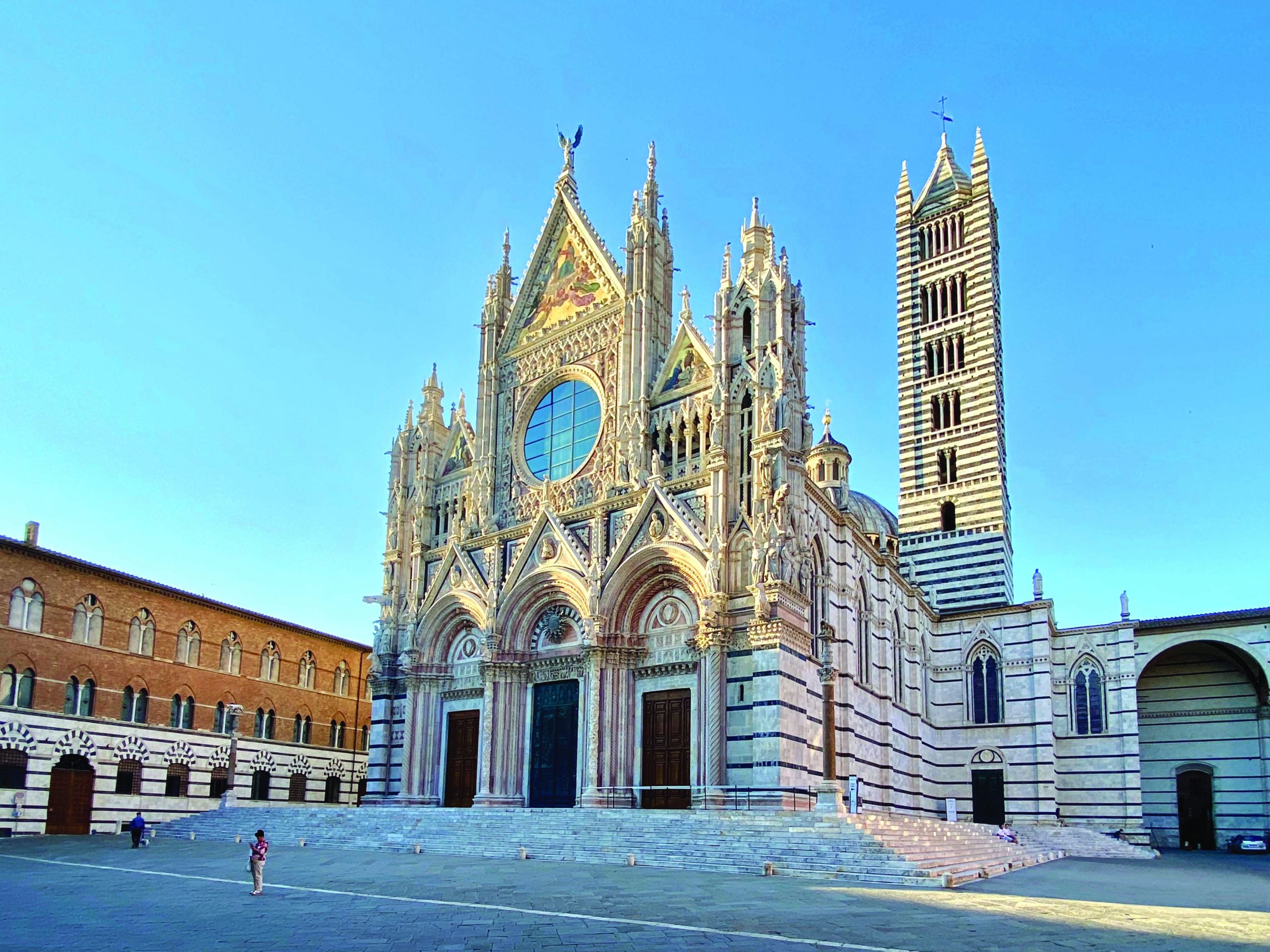A holiday destination which offers an enlightening insight into European culture, particularly of the Renaissance age, is this sunny wine-growing and cultural heart of Italy

Among the numerous hitherto exotic tourism destinations favoured by the fast-expanding middle- and upper-income groups is Tuscany, the sunny, wine-growing and cultural heart of Italy — a holiday destination which offers an enlightening insight into European culture, particularly of the Renaissance age. It’s a study-cum leisure destination worth checking out since neighbouring Milan is conveniently located on the air routes to Britain and the US.
Tuscany or Toscana offers the best of Italian cuisine, wine and cheese, magnificent Renaissance buildings and art, operatic Italian arias and ever chic Italians. Situated in northern Italy it is famous for its photogenic vistas of the rolling hills of Florence or Firenze and the bare limestone peaks of the Siennese Hills. In addition to inspiring landscape, the abundant vegetation consists of yellow wheat fields interspersed with the silvery grey of olive grove and the bright green of rows of grape vineyards meandering down hillsides.
Quite obviously a Tuscan holiday is no ordinary experience. Tuscany is the annual summer holiday destination of some of Europe’s rich and famous including former British prime minister Tony Blair apart from other notables who arrive en famille to soak up sunshine, wine, music and Europe’s most well-preserved cultural treasures.
Most of central Italy was controlled by the Etruscans (who were perhaps natives of Italy or may have come from Asia Minor) from about 700 BCE. During the period 600 200 BCE Etruscans and Romans engaged in perpetual warfare until 59 BCE when Julius Caesar established a colony for army veterans along the river Ammo which later blossomed into Florence, the largest city in Tuscany.
In circa 500 AD the Roman Empire in the west crumbled and Italian unity collapsed as wave after wave of Goths, Ostrogoths, Visigoths, Huns and Lombards rampaged their way through Italy until law and order was restored by Byzantine Emperor Charlemagne. In 1100 AD the cities of Florence, Sienna and Lucca had established themselves as independent city states. Gradually, Tuscany became a patchwork of confident city states. In 1434 banker Cosimi d’ Medici became king of Florence in all but name and the Medicis ruled the flourishing city for the next 300 years.
Cosimi d’ Medici was a patron of the arts and began funding works of art and grand cathedrals which are the pride of contemporary Florence. Patronage of the arts which made Florence the cultural capital of Italy reached its apogee under Lorenzo the Magnificent, who financed and possibly ignited the Renaissance in Italy. In 1799 Tuscany came into the possession of Napoleon who, however, was defeated in 1816 thus allowing Grand Duke Ferdinando III to return to Florence. For a brief period (1865-1870) Florence became the first capital of a united Italy (since Rome was holding out against the forces of unification).

FLORENCE
Indisputably Italy’s cultural capital, Florence (pop. 700,000) hosts some of Michelangelo’s awesome sculptures. To do justice to this treasure house which includes the Uffizi Gallery, the average visitor needs to budget at least four days. Fortunately, all the museums of art are in city centre, within walking distance of each other.
The main cathedral, the Duomo — one of the largest churches of the Christian world is visible from afar and is symbolic of the wealth and power of medieval Florence. Its sloping dome is a striking feature of Firenze’s skyline. Designed by Filippo Brunelleschi it is a work of architectural genius. The cathedral’s richly endowed museum inter alia houses Michelangelo’s famous sculpture, the Pieta and Donatella’s woodcarving of Mary Magdalene. The contiguous Galleria Dell’Accademia is graced by Michelangelo’s masterpiece — the colossal statue of David — portrayed as a muscular young man whose beauty is reminiscent of Apollo.
For visitors with even the faintest interest in Renaissance art or with an eye for beauty, the Galleria Degli Uffizzi (aka the Uffizi Gallery) is likely to prove an indelible experience. It’s advisable to get there before the museum opens at 8.15 a.m. The gallery has free admission days on which days pre-booked time slots are not followed. Unsurprisingly, the footfall on these days is far beyond the other days. Tourists planning their visit on Saturdays or holidays, must make the reservation at least one day in advance. Inside, the epic canvases of Botticelli (Birth of Venus and Primavera). Michelangelo, Andrea del Sarto, Fra Lippo, Leonardo da Vinci vie for attention, leaving the visitor dizzy with exhilaration at witnessing the works of these masters.
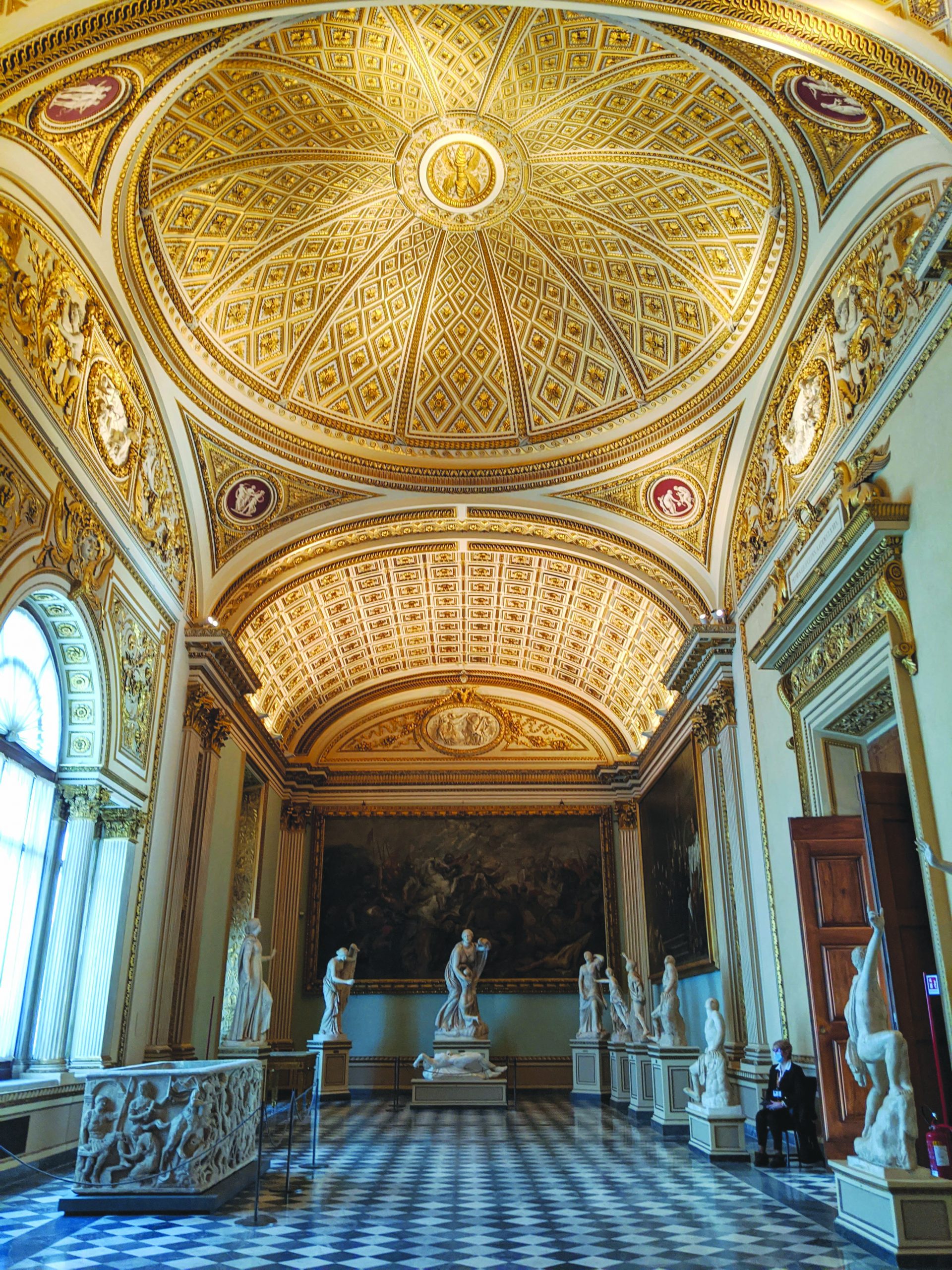
Also worth a visit is the Santa Maria Novella, a church completed in 1360 with a bright, vast interior (328 ft length). Its elegant façade embellished with horizontal strips of white and green marble is a blend of Gothic and Renaissance features. But its piéce de resistance are the dazzling frescoes of Domenico Ghirlandaio adorning the walls depicting the birth of the Virgin Mary, the Annunciation, the angel appearing to Zaccharia and the baptism of Jesus.
The Ponte Vecchio (bridge) also merits a visit since it is a famous landmark of Florence and offers beguiling views of the river and city. A 14th century structure it is now a quaint arched street lined with jewellers and goldsmiths shops. attracting a steady stream of visitors and buyers.
Accommodation. High-end: Four Seasons Hotel Firenze (Rs.62,000 per night), Hotel Firenze Number Nine (Rs.24,900), The St. Regis Florence (Rs.42,000); Mid-range: Brunelleschi Hotel (Rs.16,000), Hotel degli Orafi (Rs.12,598), Villa Medicea di Lilliano (Rs.10,210); Budget: Arte’ Boutique Hotel (Rs.8,990), Rivoli Boutique Hotel (Rs.7,982), c-hotels Joy (Rs.9,201).
Restaurants. In Florence as in the rest of Italy, restaurants, cafes and bars abound, most of them offering excellent fare. It’s best to read the menu conveniently displayed outside and decide whether the fare and prices (which vary widely) suit your taste and budget. There are a few typically Tuscan restaurants such Casa Toscana, I’Tuscani2, La Giostra, Trattoria Marione, Trattoria Mario while ubiquitous patisseries serve breakfast, coffee and snacks as well as takeway pastries and savouries. It’s the local custom to savour wine with your meal (Tuscany is famous for its Chianti but most restaurants have moved far ahead of Chianti in the basket). Olive oil, the culinary medium is the best in the world, claim the Tuscans as are their special pecorino cheeses made from ewe’s milk.
Shopping in Florence. Florence is famous for its highly finished leather goods from belts, bags, gloves, wallets, footwear to jackets. Its chic leather boutiques apart, there are pavement markets hawking designer copies of scarves and leather goods for a fraction of the price and affording the bonus of rewarding interaction with local vendors who have all the time and humour to bandy words with customers. Visitors can also choose from a wide range of premium fragrances and soaps.
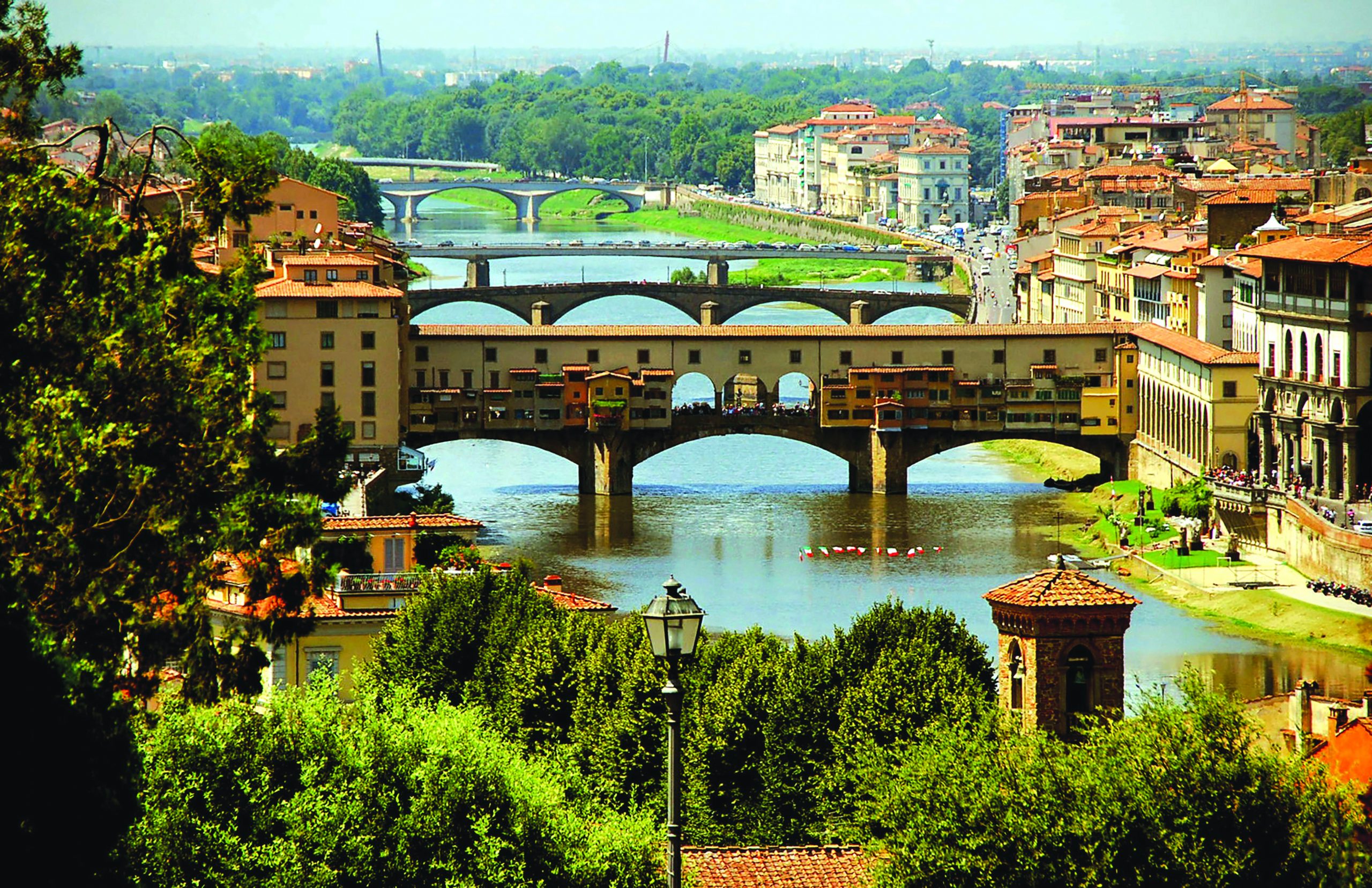
PISA
On the west seaboard of Italy this was a port when it was founded in 600 BCE. But accumulation of silt at the mouth of the River Arno forced the coastline to recede. Today Pisa (pop. 100,000) is high on the itinerary of every visitor to Italy mainly for its charming landscape and architecture.
One of the most famous buildings of the world stands in the Piazza Dei Miracoli a square which showcases splendid Romanesque buildings. The white marble mass of the unusual, circular Baptistry; the cathedral with its bell tower; the Duomo packed with splendours such as the exquisitely carved pulpit, bronze panels on the doors and the west font decorated with geometric motifs in marquetry and mosaics of glazed terracotta; and the Torre Pendente aka Leaning Tower soars to height of 189 ft veering from the straight and narrow at an angle of approximately 16 ft off the vertical and has become so well-known not by design but because of the slant, generally believed to have been caused by alluvial soil not being able to bear the weight of the construction.
Begun in 1173 by the famed architect Pisano, the work had reached the first floor when it began to subside. Ignoring this the architect went ahead to build two more floors which accentuated the subsidence. The work was abandoned for a century and taken on again by Giovanni di Simone who attempted unsuccessfully to correct the angle of the structure. Despite its peculiarity the tower is a work of art. Shaped like a cylinder, it has six floors of galleries which have the effect of an ethereal spiral because of the slant of the tower.
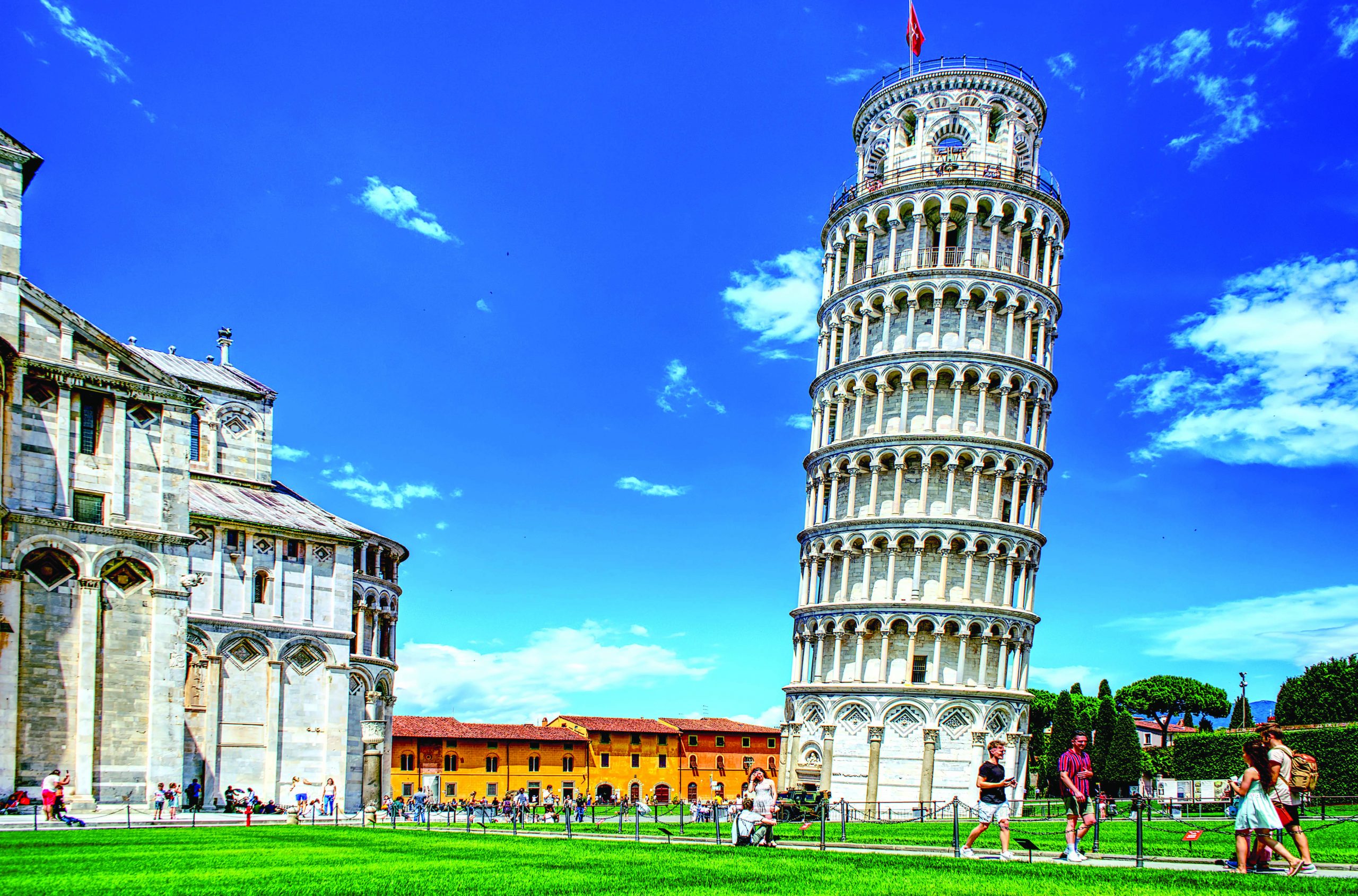
Accommodation. High-end: Hotel Pisa Tower (Rs.8,084 per night), Blue Shades Aparthotel (Rs.8,390), B&B Realis Paradise (Rs.8,618); Mid-range: Cuore di Pisa (Rs.6,423), Hotel Maria (Rs.6,998), Fattoria Belvedere (Rs.5,083); Budget: Hotel Milano (Rs.5,051), Cisanella House (Rs.3,514), La Maison dei Miracoli (Rs.3,168).
Restaurants. The Bruno and Osteria dei Cavallieri are the most favoured. If you are adventurous perhaps you could try the culinary specialty of Pisa — C’ee alla Pisanaeels tossed in warm oil flavoured with garlic and sage, served the moment they cease to wriggle.
Apart from Florence and Pisa there are other neighbouring towns such as Siena — with its magnificent town square — all of which bristle with history and art. Should you tire of these edifying aspects of a holiday liberally sprinkled with gourmet meals, you could try hiking and mountaineering. In particular, Tuscany offers numerous opportunities for walkers. The clear light that inspired generations of artists might be just the thing for you and there are special watercolour holidays and painting and sculpture courses that can be booked in advance as can a soup course in Italian cuisine.
Alternatively to relax feet and body weary from sightseeing there are thermal spas which are a specialty of the region. Or you could take a day off and bask in the sun in a pavement café anywhere in Tuscany savouring the many flavours of gelato (ice cream).
A holiday in Tuscany is indeed a slice of la dolce vita
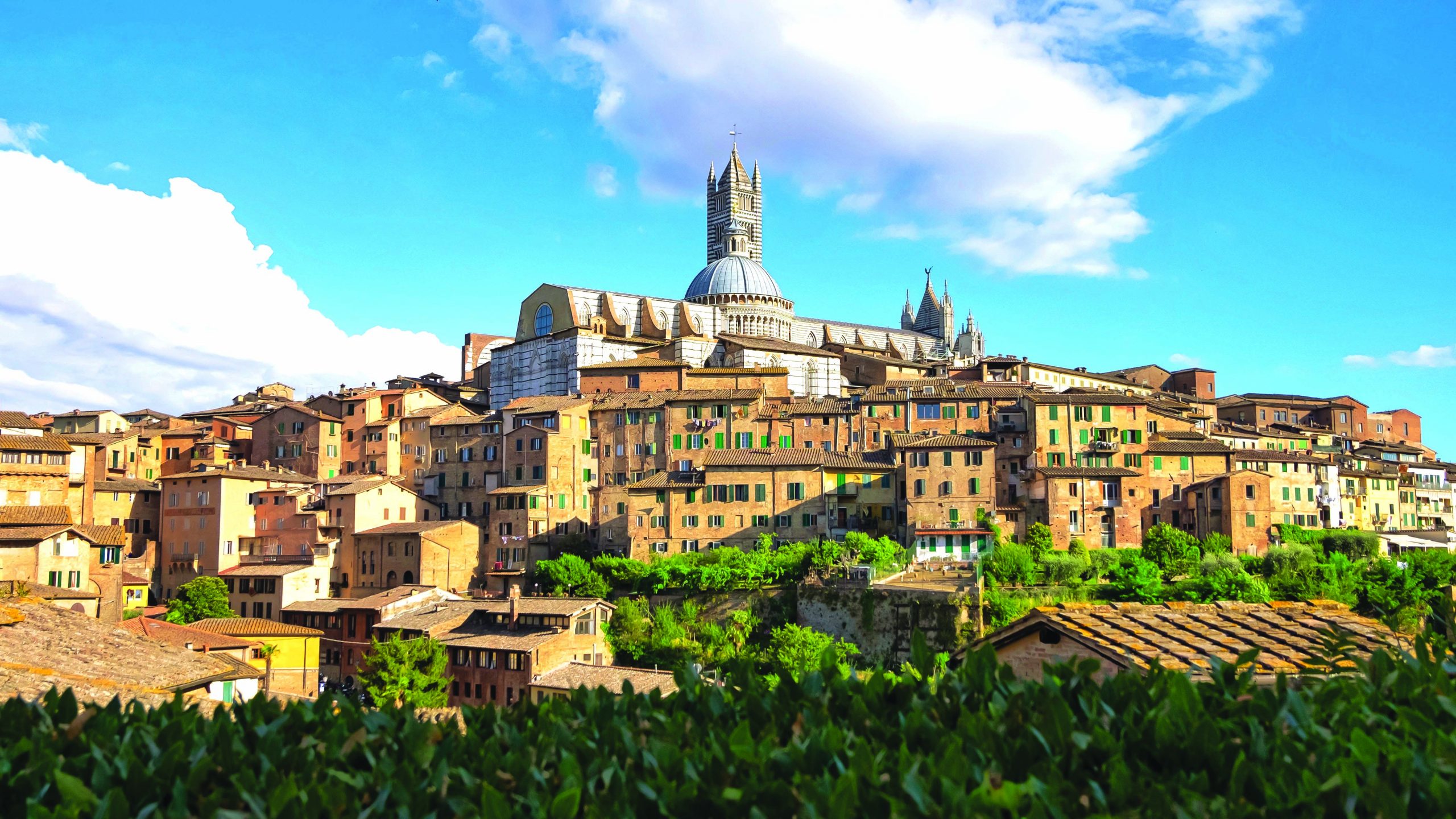
SIENA
With its huge cobblestone town square dotted with fountains this medieval city of brick hosts dozens of Gothic palaces and churches with altarpieces of unsurpassed beauty. Siena is as inscrutable in its culture, decorous in its art, and festive in its attitude as Florence is forthright, precise, and serious on all counts.
Whereas Florence produced hard-nosed mystics like Savonarola, Siena gave forth saint scholars like St. Catherine (1347-80) and St. Bernardino (1380-1444). Historic Siena has retained its medieval flavour and offers visitors an opportunity to slip into the rhythm and atmosphere of the Tuscan Middle Ages.
The Baptistry. This 14th century cathedral behind a Gothic facade is rich with artworks and walls and vaulted ceilings frescoed by Vecchietta and his school in the late 1440s.
Casa di Santa Caterina. The remarkable Caterina Benincasa, daughter of a wealthy Sienese dyer, took a nun’s veil in 1355 at the age of eight, after her first of many visions of Christ. Her reputation for devotion, wisdom and saintly life spread, and in 1378 she was chosen as Siena’s ambassador to Pope Gregory XI in Avignon. The house where she was born was converted into a sanctuary in 1466, and it remains a peaceful, reflective spot.
Duomo. Siena’s grand Gothic cathedral is a rich treasure house of Tuscan art. Built from around 1215 to 1263 by Gothic master Nicola Pisano as architect, its unique feature is its inlaid marble floor depicting historical and biblical subjects.
Enoteca Italiana Permanente. The 16th century Fortezza Medicea has been turned into a public park. Its courtyard is an open-air theatre, its ramparts are ideal for a stroll and a view, and its vaults are filled with Italy’s national wine museum. Seated at small tables in the tunnel-like brick halls or out on the terraces in summer, you can sample a choice selection of Tuscan and Italian wines.
Accommodation. High-end: Villa Elda Boutique Hotel (Rs.66,588 per night), Villasanpaolo (Rs.16,632), II Tosco (Rs.22,606), Grand Hotel Continental Siena (Rs.16,157); Mid-range: Hotel Athena (Rs.9,946), Hotel Minerva (Rs.9,503); Hotel Corsignano (Rs.9,581); Budget:Borgo San Luigi (Rs.6,498), Hotel Executive (Rs.3,633), Hotel Toscana Ambassador (Rs.4,986).
